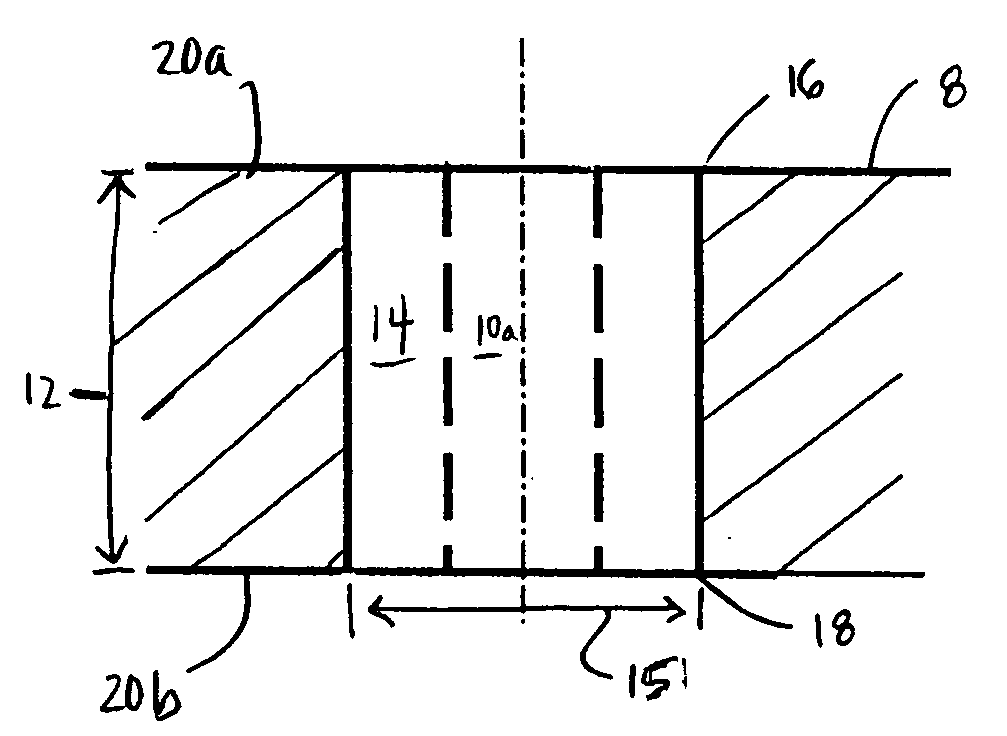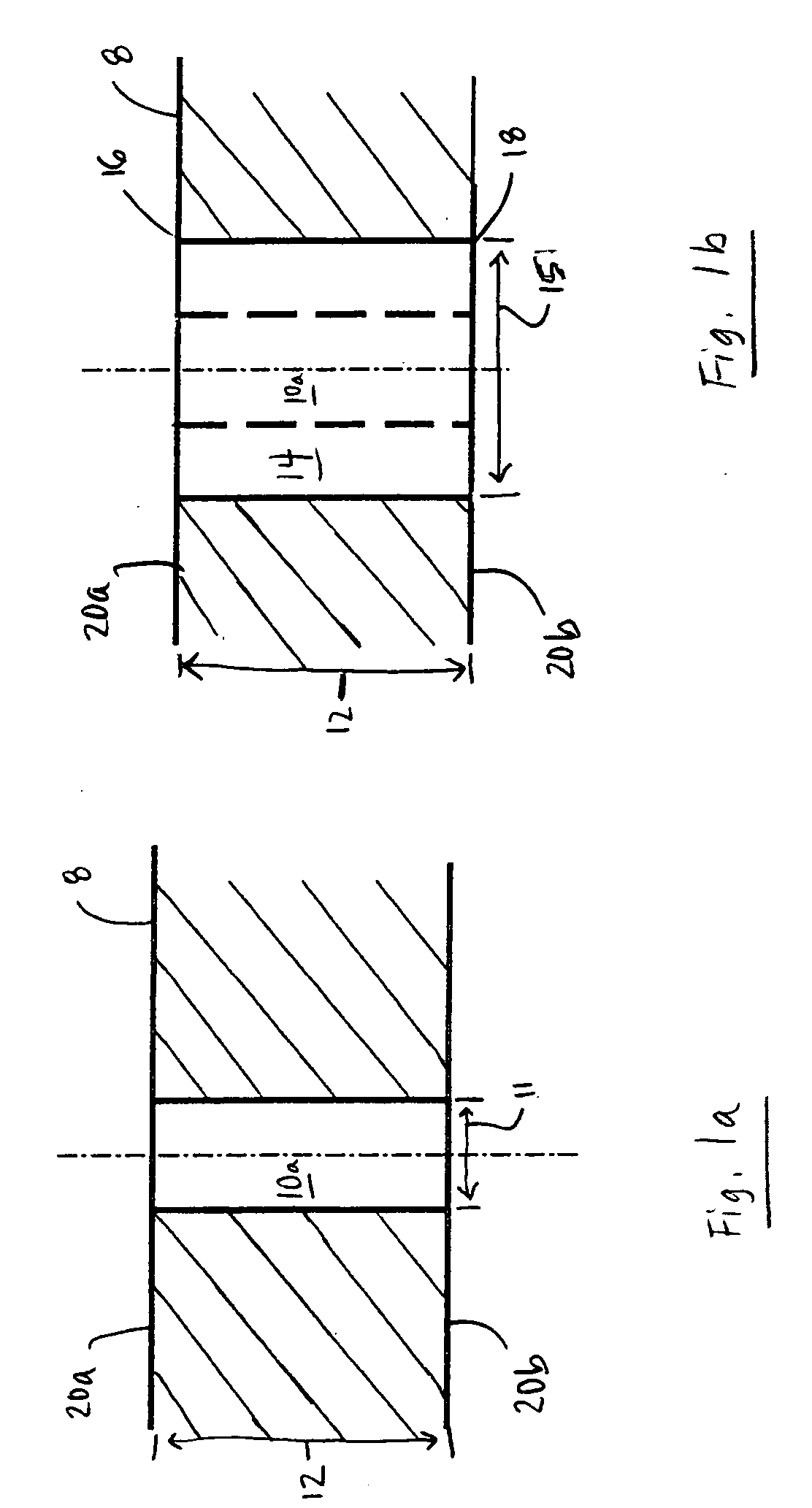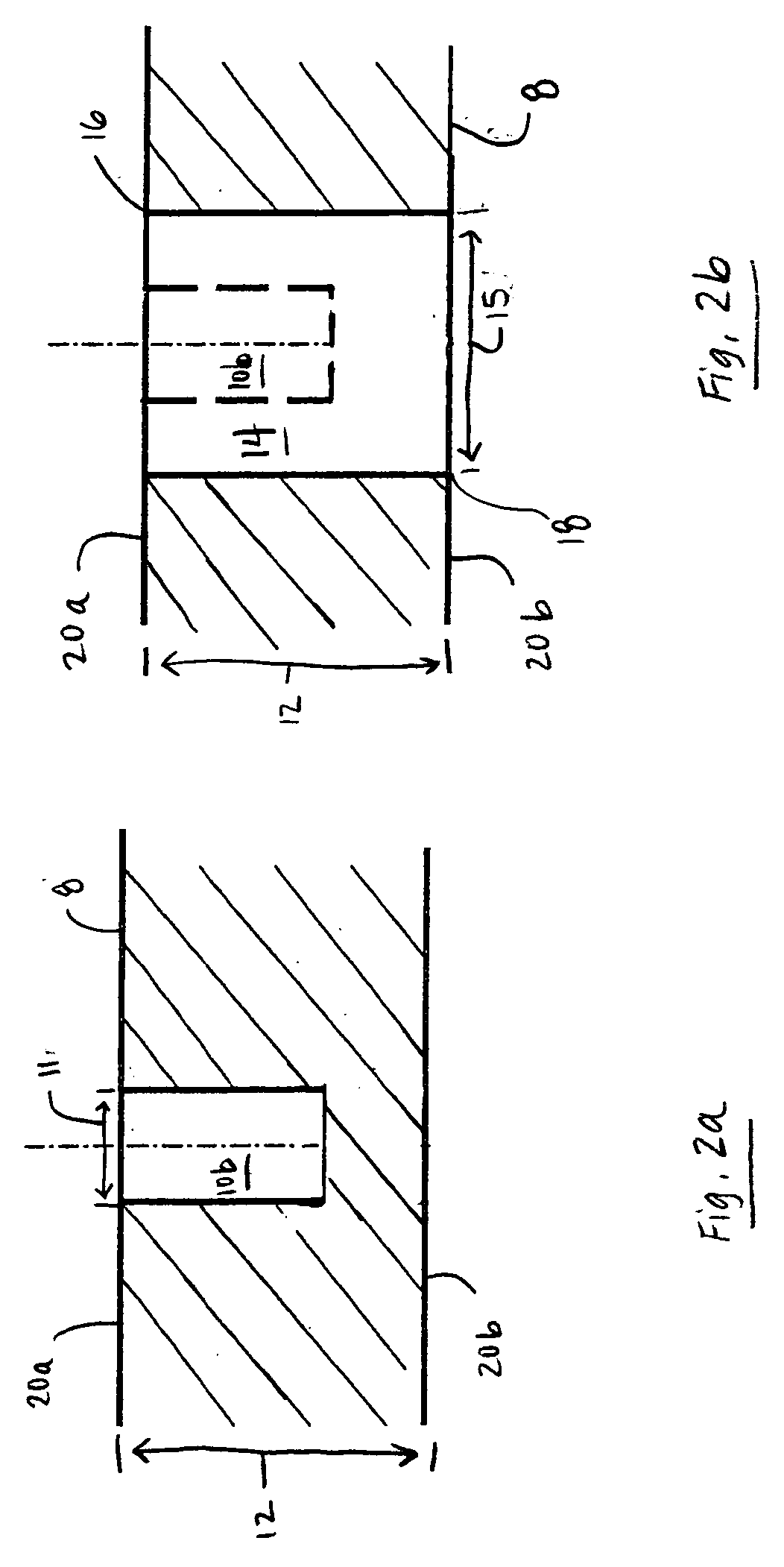Methods of drilling through-holes in homogenous and non-homogeneous substrates
a technology of homogenous and non-homogeneous substrates, applied in the direction of manufacturing tools, welding/soldering/cutting articles, semiconductor/solid-state device details, etc., can solve the problems of inability to mechanically drill through the hole, non-homogeneous substrates, and imperfect laser drilling methods, etc., to achieve minimal thermal damage, improve performance, and reduce the effect of mechanical drilling
- Summary
- Abstract
- Description
- Claims
- Application Information
AI Technical Summary
Benefits of technology
Problems solved by technology
Method used
Image
Examples
Embodiment Construction
[0022] The present invention is an efficient method of using high-power lasers to effect the controlled removal of target material to form through-holes in a target material. Specifically, the method involves drilling a pilot hole having a diameter that is less than the desired diameter of the through-hole and thereafter drilling the through-hole. With careful selection of the drilling parameters, including the diameter of the pilot hole, pilot hole formation reduces the degree and amount of thermal damage to the heat affected zone surrounding the hole, thereby significantly improving the hole wall surface quality of the drilled through-hole.
[0023] With reference to FIGS. 1a and 1b, in a first preferred embodiment of the present invention, a laser output beam 2 emitted by a high-power laser 4 is directed at a location on a target material 8. For discussion purposes, target material 8 is shown in FIGS. 1a, 1b, 2a, 2b, 3a, and 3b as a homogeneous material, but the invention is also a...
PUM
| Property | Measurement | Unit |
|---|---|---|
| diameter | aaaaa | aaaaa |
| wavelength | aaaaa | aaaaa |
| vaporization temperatures | aaaaa | aaaaa |
Abstract
Description
Claims
Application Information
 Login to View More
Login to View More - R&D
- Intellectual Property
- Life Sciences
- Materials
- Tech Scout
- Unparalleled Data Quality
- Higher Quality Content
- 60% Fewer Hallucinations
Browse by: Latest US Patents, China's latest patents, Technical Efficacy Thesaurus, Application Domain, Technology Topic, Popular Technical Reports.
© 2025 PatSnap. All rights reserved.Legal|Privacy policy|Modern Slavery Act Transparency Statement|Sitemap|About US| Contact US: help@patsnap.com



